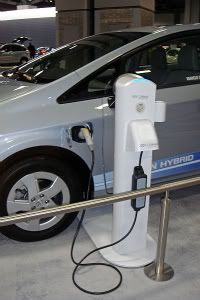Documentary on Energy and Sustainability

Scott suggested that the character could be me, given my ongoing quest to elucidate the energy picture, and get society’s wits wrapped around what will be required for a sustainable future — taking on the forces that profit from maintaining the status quo. I’m flattered, but, besides being too self-indulgent, it’s also too weak; I need another big idea. If anyone has a suggestion, please let me know. Thanks.





 Here’s a product we support that may at first blush seem a bit far afield from 2GreenEnergy’s normal business arena:
Here’s a product we support that may at first blush seem a bit far afield from 2GreenEnergy’s normal business arena: 
 Just got back from Los Angeles, have knocked out another interview for my third book (“Renewable Energy – Following the Money”). My conversation today was with
Just got back from Los Angeles, have knocked out another interview for my third book (“Renewable Energy – Following the Money”). My conversation today was with 
